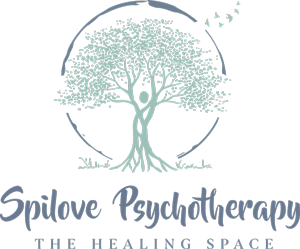Did you know that many individuals have found EMDR therapy to be an effective and beneficial treatment option for those in eating disorder recovery? If you are interested in learning more about this approach, we invite you to visit our blog where you can delve into the details.
EMDR & Eating Disorders
Healing Through EMDR: A Path to Recovery for Eating Disorders in Philadelphia
Considering Eating Disorder Treatment? Here Are Some Things To Be Mindful Of
You feel captive in your own body and don’t know how to become free, but you are beginning noticing that parts of you are ready to change. You are becoming more open to the idea of eating disorder recovery because a part of you is exhausted from all the work you have been doing. However, you are struggling to know what direction you should move in or what ED recovery could look like.
Myths About Eating Disorder Treatment Debunked
You want to be happy with yourself and let go of the shame, guilt, and hatred you have for body but are afraid of what recovery could look like. It is understandable that you are both curious and anxious about ED treatment because the ED voice is talking back to you, convincing you, that you shouldn’t. I am here to provide some insight and debunk myths that your ED voice may be telling you about eating disorder therapy.
.
Eating Disorder Recovery Support Group: Connecting with Others to FINALLY Connect with Your Body
In a time when we are more isolated than we have ever been before, you may be thinking you’re the only one who feels that keeping up with recovery is really hard right now. Yet I promise you, you are not alone. Whether that’s thinking about food and your body a lot or feeling completely overwhelmed or confused by all the diet content out there as we enter a new year, know that there is someone out there who is feeling the SAME way you are right now. Learn how to access community to boost your eating disorder community
Eating Disorder Treatment: What you should know
12 Clinical Interventions for Eating Disorders
Here are some tips you might find helpful when working with clients with Eating Disorders, or Disordered Eating:
1. Find a registered dietician who specializes in Eating Disorders. It is important that your belief systems and theirs align when working together to treat a client. For example, most people in the eating disorder recovery field believe that there are no "bad" foods and we work with clients to neutralize food. However, some people believe in "abstinence" from certain foods or food groups. When I am looking for a dietician, I make sure that they're not of the school of thought to tell my clients to restrict food groups as it would go against the work we are doing clinically.
2. Buy large desk calendar and different stickers and create a behavior chart for meals and snacks well done according to their meal plan. Celebrate successes elaborately!
3. If age appropriate, work with parents on making "no Foods bad". Everyone in the family can join in on recovery by coming together to share with all food groups.
4. If age appropriate, look into the Maudsley Method for re-feeding process.
5. Work with your client to create an art project around beautiful people, models, actresses, friends or family and others in Pinterest or print outs who are not super skinny. Process what they find beautiful about these people. Encourage clients to post up these images on their wall so that they get used to seeing ideal beauty images and other than emaciated models.
6. Make a list of all clients fear foods and safe foods and medium foods and use CBT to debunk myths of fear foods.
7. Eat 'normal meals' together in session - especially with fear foods - exposure therapy.
8. Find studies that show that whatever fear foods are - are not 'bad' i.e. - sugar is not as evil as everyone says.
9. Use ego state work to find out which 'parts' in clients psyche are telling them not to eat and have conversations with them using Gestalt Chair Work.
10. Use the books Life Without Ed by Jenni Schaefer as a guilde book, everyone involved should read and the book 8 Keys to Recover from an Eating Disorder by Carolyn Costin can be used for treatment and interventions as well.
11. The therapist can have client draw their body in the size and shape she believes it's in, then have therapist actually trace clients body and process the difference.
12. If there's one body part the client is upset about like their waist, have client draw what they believe is their waist size, then use a string to measure (not using numbers) the actual size and trace THAT onto the paper and process the difference.
Hope this helps!!
What else do you use as interventions for clients? Please comment below!! As always, if you have any questions or concerns, please contact me at 610.314.8402 or through www.TiffanySpilove.com













